Top 10 Pharmacy Schools on the West Coast

In preparing our inaugural list of the top pharmacy schools on the West Coast, we considered dozens of schools in the US that offered pharmacy programs. Our goal with this list is to give students access to information so they can make informed decisions about the schools they choose to attend and the programs they pursue. Our motivation for publishing these rankings is simple. We frequently receive emails from young people -many of whom are already working as pharmacy technicians- asking for advice as to which pharmacy schools they should consider. Our hope is that this list is a starting point for aspiring pharmacists to discover the schools that are the best fit for them.
The criteria we used in making this list consists, in no particular order, of the following: academic reputation, admission selectivity, depth and breadth of the program and faculty, size and scope of the pharm school class, and value as it relates to tuition. All data used on our rankings was obtained from publicly available sources.
Like any list, ours is not perfect and is open for debate. There is no single opinion that trumps all when it comes to which school is the “best”. Ultimately every student has different needs regarding the type and academic rigor of a program, campus culture, as well as cost, lifestyle, and career focus. Hence the notion that we consider these lists a starting point for aspiring pharmacists in the search for the appropriate program that meets their needs.
 1. University of California-San Francisco School of Pharmacy, San Francisco, California
1. University of California-San Francisco School of Pharmacy, San Francisco, California
The University of California-San Francisco School of Pharmacy was founded in 1872 as the California College of Pharmacy. This top-ranked School of Pharmacy was the first pharmacy school in the west. Home to 844 students, the School of Pharmacy offers the Pharm.D. with degree pathways in Pharmaceutical Care, Pharmaceutical Sciences, and Health Services & Policy Research.
The School also offers Ph.D. degrees in Bioengineering (BioE), Bioinformatics (BI), Biophysics (BP), Chemistry and Chemical Biology (CCB), and Pharmaceutical Sciences & Pharmacogenomics (PSPG) as well as a M.S. in Transitional Medicine.
The cost of attendance, which includes student services, fees, and tuition, is $35,382 for Pharmacy 1, 2, and 3 programs (9 months), and $35,307 for the Pharmacy 4 program (9 months). These amounts do not include non-resident supplemental tuition of $12,245.
About University of California-San Francisco: Founded in 1864, the University of California-San Francisco (UCSF) is the second largest employer in the state and the only campus in the 10-campus University of California system “dedicated exclusively to the health sciences.” The University’s professional schools, graduate programs, Medical Center, and Children's Hospital “consistently” rank among the best in America by U.S. News & World Report.
Situated on a 255-acre campus, UCSF is home to 2,940 students, 1,030 postdoctoral scholars, and 1,620 residents consisting of physicians, dentists, and pharmacists in training.
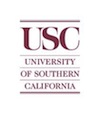 2. University of Southern California School of Pharmacy, Los Angeles, California
2. University of Southern California School of Pharmacy, Los Angeles, California
Established in 1905, the University of Southern California School of Pharmacy ranks among the Best Schools of Pharmacy in the Nation. Home to nearly 1,000 students, the School has one of the country’s largest collections of offerings for aspiring pharmacy professionals. Offerings include the Pharm.D., a Ph.D. in Clinical and Experimental Therapeutics, a M.S. in Regulatory Science, and the nation’s only Professional Doctorate in Regulatory Science (D.R.Sc.).
The School also offers a Master’s degree and Doctoral programs in Molecular Pharmacology and Toxicology, Pharmaceutical Sciences, and Pharmaceutical Economics and Policy; a M.S. and Ph.D. in Pharmaceutical Sciences, a M.S. in Management and Drug Development, a M.S., Progressive M.S. and Ph.D. in Health Economics, a M.S. in Healthcare Decision Analysis, and a Pre-pharmacy program. Dual degree offerings are plentiful as well and include the Pharm.D./MBA., Pharm.D./J.D., Pharm.D./Ph.D., Pharm.D./MPH, and the Pharm.D./M.S. in Regulatory Science, Gerontology, or Global Medicine.
Tuition for the University of Southern California School of Pharmacy is $46,862 per academic school year.
About University of Southern California: The University of Southern California (USC) opened its doors in 1880 with just 53 students. Today, the school sits on a 226-acre campus and it is home to an impressive 40,000 students. Ranked among the Nation’s Top 50 Colleges by U.S. News & World Report, USC offers hundreds of programs across 21 colleges and schools, and one academy.
 3. University of California-San Diego, Skaggs School of Pharmacy and Pharmaceutical Sciences, San Diego, California
3. University of California-San Diego, Skaggs School of Pharmacy and Pharmaceutical Sciences, San Diego, California
Ranked among the Top 20 Public Universities in the Nation by U.S. News & World Report, UC San Diego is home to one of the nation’s youngest and most successful pharmacy schools—Skaggs School of Pharmacy and Pharmaceutical Sciences. The School, which is home to an impressive 240 Pharm.D. students, 60 Ph.D. students, and 30 pharmacy residents, receives hundreds of applications each year.
In addition to the Pharm.D., the UC San Diego Skaggs School offers a B.S. Chemistry/Doctor of Pharmacy, and a Pharm.D./Ph.D. program. The cost of study for the Skaggs School of Pharmacy and Pharmaceutical Sciences is $11,762.50 per semester for residents and $15,844.50 per semester for non-residents.
About University of California-San Diego: The University of California-San Diego (UC San Diego) was officially established on November 18, 1960. The school began with just 63 acres of donated land and a few students. Today, UC San Diego sits “near the Pacific Ocean on 1,200 acres of coastal woodland in La Jolla, California” and it is home to 29,052 students. The University offers more than 100 fields of study throughout 10 divisions and schools.
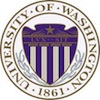 4. University of Washington School of Pharmacy, Seattle, Washington
4. University of Washington School of Pharmacy, Seattle, Washington
When the University of Washington School of Pharmacy was established in 1894, it became the nation’s 51st School of Pharmacy. At it’s opening, the School had just 21 students. Today, the University of Washington School of Pharmacy is home to nearly 500 students.
Offerings include the Pharm.D., M.S. degrees in Medicinal Chemistry, Pharmaceutical Outcomes Research & Policy Program (PORPP), and Pharmaceutics; a Professional M.S. in Biomedical Regulatory Affairs, and Ph.D. degrees in Medicinal Chemistry, Pharmaceutics, and Pharmaceutical Outcomes Research & Policy Program (PORPP).
The School of Pharmacy also offers dual degrees including a Pharm.D./Physician Assistant, Pharm.D./M.S., and a Pharm.D./Ph.D. Tuition and fees for residents total $26,328 per year and $47,964 per year for non-residents.
About University of Washington: Founded in 1861, the University of Wyoming began with just 10 acres of land, which would eventually become Downtown Seattle. Today, the school consists of a 700-acre main campus (Seattle), a 46-acre campus in Tacoma, WA, and a 128-acre campus in Bothell, WA. The school, which is home to more than 49,000 students, offers more than 100 academic programs throughout 16 colleges and schools.
 5. University of Wyoming School of Pharmacy, Laramie, Wyoming
5. University of Wyoming School of Pharmacy, Laramie, Wyoming
The University of Wyoming School of Pharmacy was founded in 1946. Part of the College of Health Sciences, the School of Pharmacy is home to 52 students and it offers the Pharm.D. and a Pharm.D./MBA. Tuition for the University of Wyoming School of Pharmacy is $14,322 for residents (FT - Per Year, 12+ Credits/Semester) and $28,908 for non-residents.
About University of Wyoming: TheUniversity of Wyoming (UW) was established in 1886. This top-ranked research institution offers more than 200 areas of study throughout seven colleges and a number of interdisciplinary institutes and schools. The University, which sits on a lush 785-acre campus, is home to nearly 14,000 students. Besides being listed among the nations Top Colleges and Universities by U.S. News & World Report, Princeton Review, and Forbes, the University of Wyoming has been named a Top Adventure College by Outside Magazine.
 6. Oregon State University College of Pharmacy, Corvallis, Oregon
6. Oregon State University College of Pharmacy, Corvallis, Oregon
Oregon State University College of Pharmacy has been a part of Oregon State University for more than a century. Housed at the University’s main campus, the College of Pharmacy offers the Pharm.D. and Ph.D. degrees in Pharmaceutical Research and Medical Chemistry Research. The College also offers a MBA in Executive Leadership for Pharmacy Professionals and Leaders, and a Pre-pharmacy program.
Resident tuition for the College of Pharmacy is $6,720 per term and $11,568 per term for non-residents. Tuition for the MBA program is $35,760 per year.
About Oregon State University: Established in 1868, Oregon State University (OSU) is situated on a 400-acre campus and it is home to more than 26,000 students from 50 states and 89 countries. The University, which is located just 90 miles from Portland, offers more than 280 academic programs throughout 12 colleges. OSU is also home to one of the country’s top Ecampuses, which offers more than 30 graduate and undergraduate programs.
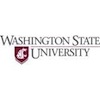 7. Washington State University College of Pharmacy, Pullman-Spokane, Washington
7. Washington State University College of Pharmacy, Pullman-Spokane, Washington
Washington State University College of Pharmacy offers classes at both the Pullman and Spokane campuses. Students spend their first three years at the Pullman campus and the fourth year at the Spokane campus. Offerings include the Pharm.D., a Ph.D. in Pharmaceutical Sciences (since 1931), and a Pre-Pharmacy program (offered through University College).
Tuition for the first three years is $20,512 per year for residents and $37,166 per year for non-residents. Undergraduate resident tuition is $11,396 per year and $24,478 per year for non-residents.
About Washington State University: Established in 1890, Washington State University (WSU) is the state’s original land-grant university and it ranks among the Nation’s Top 60 Public Research Universities by U.S. News & World Report. The University, which consists of four traditional campuses and one global campus (online), is home to 26,000 students enrolled in more than 375 academic programs throughout 11 colleges and the Graduate School
WSU campuses include Spokane (48 acres), Tri-Cities (202 acres), Vancouver (351 acres), and the main campus—Pullman (1,742 acres).
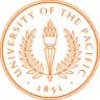 8. University of the Pacific Thomas J. Long School of Pharmacy and Health Sciences, Stockton, California
8. University of the Pacific Thomas J. Long School of Pharmacy and Health Sciences, Stockton, California
In 1959, the University of the Pacific Thomas J. Long School of Pharmacy and Health Sciences received full accreditation by the Accreditation Council for Pharmacy Education (ACPE). The School’s first graduating class consisted of just 16 students. Today, the School welcomes hundreds of pharmacy students each year.
The Thomas J. Long School of Pharmacy and Health Sciences offers several degree and joint degree programs for aspiring pharmacists. Offerings include the Pharm.D., a Ph.D. in Physical Therapy, M.S. degrees in Pharmaceutical Chemical Sciences and Industrial Pharmaceutics, and a Ph.D. in Pharmaceutical Chemical Sciences.
The School also offers a variety of joint degree programs. Joint offerings include the Pharm.D./MBA, Pharm.D./Ph.D., and Pharm.D./M.S.
Tuition for the Pharm.D. program is $57,975 per year for years 1 and 2 (3 trimesters each) and $38,650 for the third year (2 trimesters). Tuition for other pharmacy programs is $21,085 per semester/term for 16-18 units.
About University of the Pacific: Established in 1851,University of the Pacific is a nationally ranked institution with a student population of 7,000. The University sits on a 175-acre main campus, with two additional campuses in Sacramento and San Francisco. University of the Pacific offers more than 80 majors and programs of study throughout nine colleges and schools.
 9. Idaho State University College of Pharmacy, Pocatello, Idaho
9. Idaho State University College of Pharmacy, Pocatello, Idaho
Idaho State University College of Pharmacy is the University’s oldest college. Home to nearly 300 students, the Idaho State University College of Pharmacy offers the Pharm.D., M.S. and Ph.D. degrees in Pharmacology, Pharmaceutics, and Drug Discovery & Development, and several dual degrees.
Dual degree offerings include the Pharm.D./MBA, Pharm.D./M.S., and the Pharm.D./Ph.D. A Minor in Pharmaceutical Sciences and a Nontraditional (distance) Pharm.D. are also on the menu. The distance Pharm.D. has an enrollment of more than 120 students.
The traditional Pharm.D. program can be completed at the Pocatello or Meridian, Idaho campuses. Year four may be completed at the any of the college's Idaho-based clinical sites in Boise, Pocatello, or Coeur d’Alene, or in Reno, Nevada.
Tuition for the Idaho State University College of Pharmacy is $8,614 per semester for Idaho residents and $16,780 per semester for non-residents.
About Idaho State University: Founded in 1901, Idaho State University is a Carnegie-classified doctoral research and teaching institution that offers 75 percent of Idaho’s health profession degree programs. The University, which consists of a 1,100-acre main campus (Pocatello) and additional campuses in Meridian, Idaho Falls, and Twin Falls, is home to nearly 14,500 students enrolled in 285 degree and certificate programs.
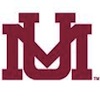 10. University of Montana Skaggs School of Pharmacy, Missoula, Montana
10. University of Montana Skaggs School of Pharmacy, Missoula, Montana
The University of Montana Skaggs School of Pharmacy was established in 1907 at Montana State College. The College was transferred to the University of Montana-Missoula (UM) in 1913. Today, as part of the University of Montana College of Health Professions & Biomedical Sciences, the UM Skaggs School of Pharmacy offers programs through the Department of Pharmacy Practice and the Department of Biomedical & Pharmaceutical Sciences.
Offerings include the Pharm.D., and M.S. and Ph.D. degrees in Medicinal Chemistry, Toxicology, and Biomedical and Pharmaceutical Science. The cost to attend UM Skaggs School of Pharmacy includes tuition, fees, and a “pharmacy tuition surcharge.” The cost for Montana residents is $11,455 per year and $28,170 per year for non-residents.
About University of Montana: The University of Montana is one of only five public universities that rank among the Top 20 Public Universities in Producing Rhodes Scholars. Established in 1893, the University is also one of the Nation’s 377 Top Institutions for Undergraduate Education by Princeton Review. The school, which sits on a 56-acre main campus and a 180-acre South Campus, is home to 15,000 students enrolled in more than 200 academic programs throughout 13 colleges and schools.

- Facebook Like
- Google Plus One
- 76838 reads


